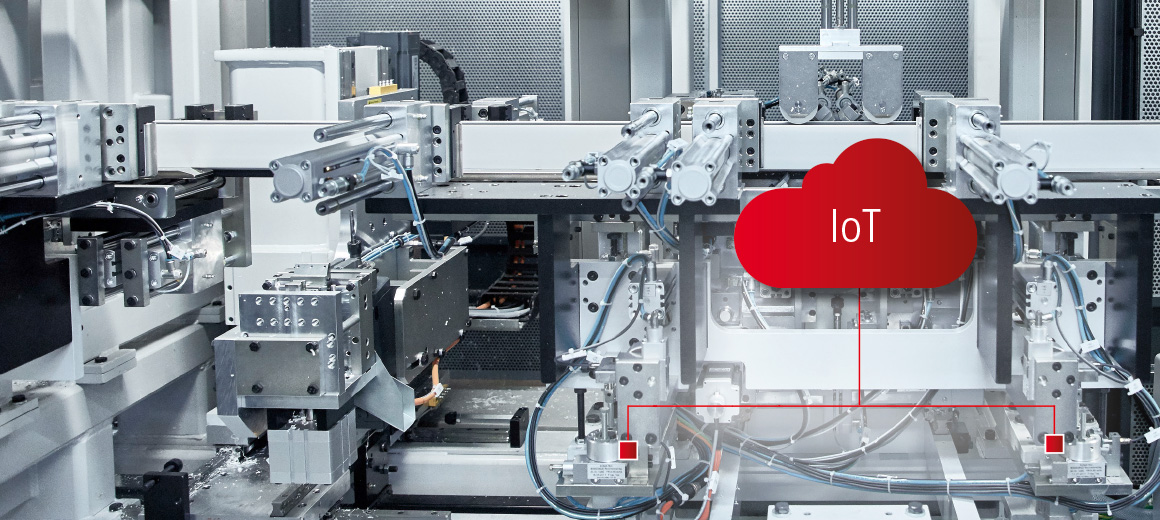
Creating value
Siège social Belgique
Beckhoff Automation BV

Creating value
Beckhoff provides the foundational technologies and tools needed today to implement Industrie 4.0 concepts and Internet of Things (IoT) connectivity, all via PC-based control. TwinCAT engineering and control software packages are available for the creation of applications such as big data, pattern recognition as well as condition or power monitoring, in addition to traditional control tasks – which can sustainably increase production and engineering efficiency as a result. New software libraries are now available for advanced analytics and communication between controllers and cloud-based services: “TwinCAT Analytics“ saves the process data locally, on the server or in the cloud in synchronization with the machine cycle. All data are recorded and serve as the basis for extensive analyses; this enables new predictive maintenance technologies and minimizes machine downtime. “TwinCAT IoT Communication“ supports common protocols for cloud communication and push messages to smart devices. TwinCAT IoT is quick and easy to configure and, together with an Industrial PC or Embedded PC as the IoT controller, establishes a seamless connection between the Internet of Things and the Internet of Services.

The TwinCAT 3 Analytics Workbench is a TwinCAT 3 engineering product for the creation of continual data analyses from various spatially distributed machine controllers. The configuration of the workbench is integrated in Microsoft Visual Studio® and serves as the graphic user interface. Many algorithms are available in a toolbox for the configuration of the analysis:

The TwinCAT 3 Analytics Service Tool is used for commissioning the machine and for service engineers. Live and historical data can be retrieved for an analysis via the IoT connection. The analysis is configured in Microsoft Visual Studio® where the user has access to a toolbox of algorithms for implementing the relevant life time, cycle time, envelope or component counter analysis. The outputs of the algorithms can be used as inputs for other algorithms or can be output as a result directly in the graphical editor. Signal paths can be visualized with ease by means of parallel recording with the TwinCAT Scope. Analysis results can be dragged by the user from the analytics configurator and dropped in the charting tool so as to mark the significant positions in the data stream. The interaction between the product components offers advantages in particular for diagnosing machine behavior and can highlight optimization potential. The user’s location is immaterial owing to the IoT technologies used, which means that service technicians can perform system and machine diagnostics from practically any location.

TwinCAT 3 IoT Communication provides basic functionalities in the form of PLC libraries for sending and receiving data via the so-called MQ Telemetry Transport (MQTT) protocol.

Connections to cloud-based communications services can be established with the aid of the TwinCAT 3 IoT Functions. The focus is not on pure protocol implementations (such as with the TF6701), but on targeted communication with a service in the cloud, such as the Microsoft Azure IoT Hub or Amazon Web Services IoT. The TF6710 uses the functionalities of the TwinCAT 3 IoT Data Agent (TF6720) in the background for this. In this way, communication connections, for example to the Microsoft Azure IoT Hub, are often much easier and more native to realize than with a direct connection via the MQTT protocol. The user can access these functionalities via PLC function blocks in order to easily send process data from the TwinCAT runtime to communication services in the cloud or to receive data from these services.

The TwinCAT 3 IoT Data Agent provides bi-directional IoT communication functions in the form of a gateway application that can be configured and operated independently from the TwinCAT real-time environment.

The TwinCAT 3 IoT Communicator makes it possible to easily transmit process data to multiple end devices, monitor status changes, and send information back to the machine. The IoT Communicator is also ideal for use in building automation. Widgets can be used to display values for lamps, fans, air conditioning systems and other components.

The TwinCAT 3 IoT Communicator App provides a simple solution for monitoring and analyzing TwinCAT process data on mobile end devices. In addition, widgets for lamps, fans, air conditioners and other components enable specific data from building automation to be displayed. To receive, send and display selected TwinCAT messages, apps can be downloaded from the app stores free of charge.

So-called REST (Representational State Transfer) APIs are frequently offered by web servers in IoT communication in order to channel certain communication processes via a uniform and stateless interface. REST APIs can be used, for example, to query weather data, to communicate with messenger services or as an interface for writing to a database.